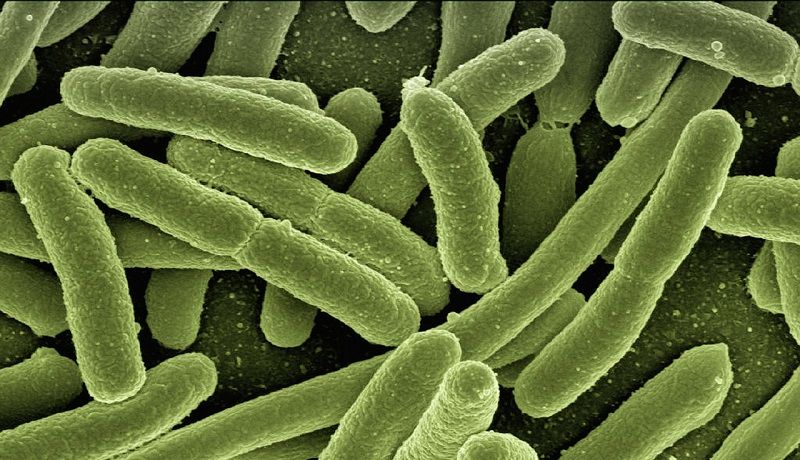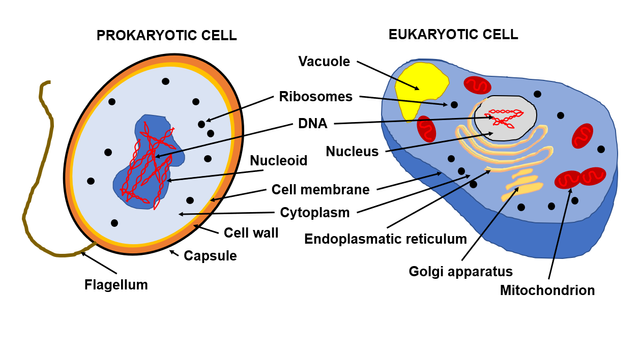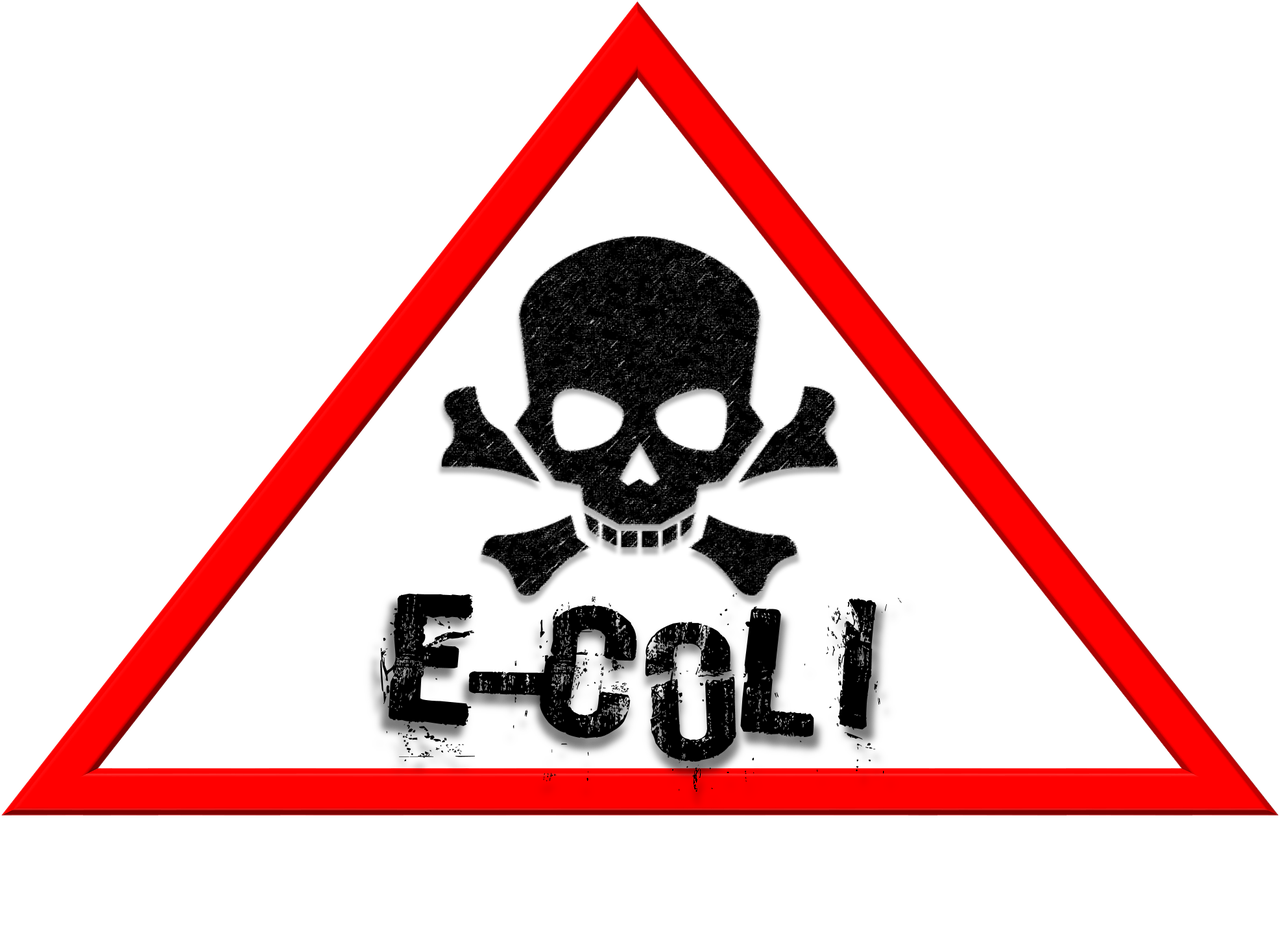Hi guys! Today I would like to introduce you to Escherichia coli – a gut-loving bacteria that everyone of us has inside (yeah, really). It is also one of the mostly used organisms in microbiology and many great discoveries were achieved thanks to this little fella.
So, we will go through basic biology of E. coli, uses of E. coli in research and biotechnology as well as famous discoveries that involved usage of this bacterium. There is also the question whether it is a beneficial bacterium for us or not. Well, the answer is not that simple – let’s find out!

Biology of E. coli
It is a Gram-negative, facultatively anaerobic, rod-shaped, coliform bacteria. Now, lets break down this sentence and explain what each strange word means. I already covered most of it HERE and HERE, but nevertheless let’s translate it in this article as well.
So, first thing first – bacteria. Bacteria are prokaryotic unicellular microorganisms. That means that they are very small organisms that we cannot see with naked eye and their cellular composition drastically differs from cellular composition of for example yeast (that is eukaryotic organism). The main difference is in the absence of any membrane bound organelles (something like cellular organs) in prokaryotes and thus bacteria. Rod-shaped refers to the shape of their cells, whereas coliform means that they can ferment lactose.

Gram-negative. As I already explained in the article about yogurt contamination, there are two types of bacteria – gram-positive and gram-negative. This differentiation is based on different properties of cell walls of these bacteria (cell wall forms the surface of bacteria). When stained with special dyes scientist can differentiate between these two types (gram-positive turn violet, whereas gram-negative turn pink). This is great for diagnostic purposes as it is cheap and relatively short technique.
And facultatively anaerobic – what does that mean? It refers to the preference of E. coli to respiration as a process of energy gain, but when oxygen is not present it can switch its metabolic pathways and rely on fermentation (that is not so energetically efficient).
Their division (doubling) time is around 20 minutes under optimal conditions – 37°C.
Ecology
E. coli is a stable resident of our lower intestine and part of normal gut microbial flora. They produce vitamin K and prevent the colonization of intestine by pathogenic organisms. They become part of us around 40 hours after birth – colonizing infant’s gastrointestinal tract due to nurture, water administration or just from the individuals handling the child.
Pathogeny
Under normal circumstances E. coli does not cause disease. But. If it acquires genetic elements that encode virulence factors, you may be in trouble. Most virulent strains cause gastro-intestinal or urinary tract infections. Symptoms include diarrhea, vomiting, abdominal cramps, even fever. Very young children infected with pathogenetic form of E. coli are under much higher risk.

Model organism and what do I use E. coli for?
Apart from being resident of our bodies E. coli is perfect model organism in biology. Probably every biologist here worked with this bacterium at least once. Various strains are used and are usually non-pathogenic and cannot even survive outside the laboratory environment. Why is E. coli a perfect model organism? Well, its cheap, easy to handle and has short division time. And many cellular processes are similar to even humans (even though yeast are probably better for this). E. coli was also among the first organisms to have its genome sequenced.
What do I use it for? Well, I usually put plasmid inside it, let them replicate and the extract the plasmid. Now now, what is a plasmid you ask? It is a circular molecule of DNA that contains additional genes. Bacteria can exchange these plasmids and then gain special properties. It is like a super power serum really. For example, bacterium can get plasmid that gives her antibiotic resistance. What I do – I have plasmids that contain some DNA regions that are interesting for me. So, I put my plasmids into E. coli and let them grow. Then I collect the cells and use special chemicals and procedures to obtain only the plasmid DNA- and because of bacteria multiplication I also have multiplied plasmid DNA. Did not know that I will dig into this, but why not. There is this question – Why should the bacteria I use retain the plasmid? Usually organisms keep only something they need or something they cannot get rid of. The plasmid I use contains another gene – resistance to certain antibiotic. And I put this antibiotic into the growth medium that I cultivate the bacteria on. Thus, they need to keep the plasmid if they want to survive! This is called selection and we use it in microbiology and genetics all the time.
Nobel prize here, Nobel prize there
E. coli actually won a lot of Nobel prizes, it might even be the record holder of most Nobel Prizes awarded. Below is a list of Nobel-worthy discoveries that were possible only thanks to E. coli.
2015: Mechanistic studies of DNA repair - Escherichia coli was extensively used in this research
2008: Green fluorescent protein (more about GFP HERE )
1999: Signal sequences on proteins, one way that cells organize themselves
1997: ATP generation, how cells make ATP (the main source of energy in organisms)
1989: RNA as an enzyme, additional roles for RNA discovered (it is similar to DNA, but different :D )
1980: Recombinant DNA, the creation of the first genetically engineered DNA
1978: Restriction enzymes - cellular “scissors” that allow scientists to cut DNA
1969: Virus replication, how viruses reproduce inside cells (many E. coli died here)
1968: The genetic code - the language in which our DNA is written
1965: Gene regulation - how genes are turned on or off
1959: DNA replication – how are genes copied
1958: Bacterial sex, and other ways bacteria can share genes with one another (such as sharing plasmids!)
Source
Concluding remarks
So, I hope you all did learn something new about E. coli and its importance to our gut flora as well as basic biological research. If you have any questions, then do not hesitate and leave them in the comments.
Thank you and have a nice day!
Previous parts of Microbiology series:
Part 1 - Virus, bacteria or yeast. What’s the difference?
Part 2 - Antonie van Leeuwenhoek – Father of Microbiology
Part 3 - Queen of fermentation – Saccharomyces cerevisiae
References:
Bacteria – Wikipedia article
Escherichia coli – Wikipedia article
List of Nobel prize winners
Other sources are directly in the text
Hi, thank you for a simple introduction to E. coli, the organism that I am also working on. I would like to add a bit more about the pathogenic side of E. coli. According to the recently released report from WHO's Global Antimicrobial Resistance Surveillance System (GLASS), E. coli is the species most reported from 44 countries participating in the system, indicating the high burden of E. coli in causing infections in human. You can view GLASS data by country here.
E. coli is the most frequent cause of community and hospital-acquired urinary tract infections, the most frequent cause of bloodstream infection at all ages, and also one of the leading causes of food-borne infections worldwide. The burden of E. coli infections is further complicated by the increasing rate of antimicrobial resistant E. coli worldwide, limiting the treatment option for E. coli infected patients.
For many scientists using E. coli as a tools to study biology/microbiology, it is a close friend that help them further scientific advances, but let's not forget that out there in the wild it is the leading causes of human infections worldwide.
Downvoting a post can decrease pending rewards and make it less visible. Common reasons:
Submit
Thank you very much for interesting additional info! :)
It is great to have fellow biologist here, I am looking forward to some of your articles!
Downvoting a post can decrease pending rewards and make it less visible. Common reasons:
Submit
I love this post, am a microbiologist to be
I will be glad to be playing with with E.coli and other bacteria
Downvoting a post can decrease pending rewards and make it less visible. Common reasons:
Submit
Actually it is really quite fascinating - at least to me! And there is no greater joy, then when you actually grow something you have been working on for days (yes, sometimes it is also quite frustrating). :D
Downvoting a post can decrease pending rewards and make it less visible. Common reasons:
Submit
I find this very interesting. I vividly remember the only time I was ever able to look into a microscope at school. It was some kind of translucent snake thingy that was eating something. It looked kinda cute.
I hope I will get another chance to see this wondrous world again. Although I won't become a micro-biologist, I find this world extremely intriguing.
Downvoting a post can decrease pending rewards and make it less visible. Common reasons:
Submit
I am glad you liked it! :) Great thing is that nowdays there are many quite cheap light microscopes, so literally anybody can look into this microscopic world.
And the snake thingy you saw was maybe C. elegans, because, yeah, it does look like translucent tiny snake :D
Downvoting a post can decrease pending rewards and make it less visible. Common reasons:
Submit